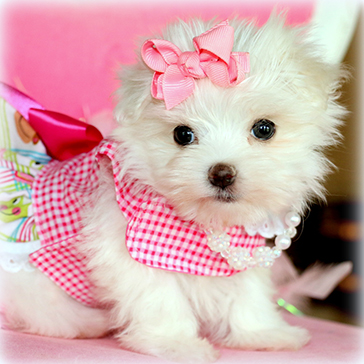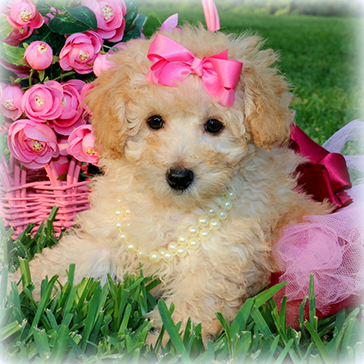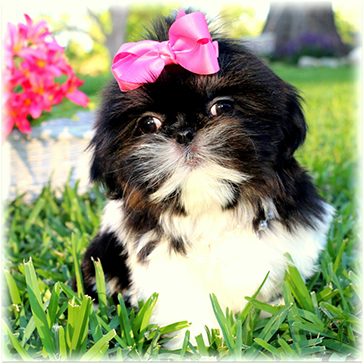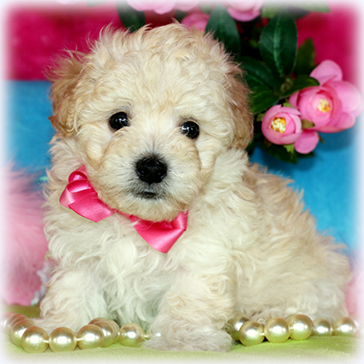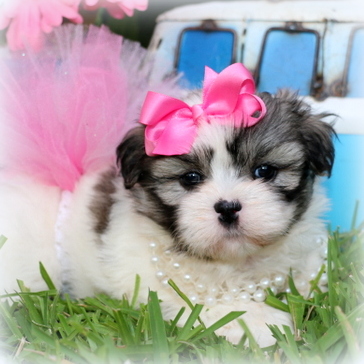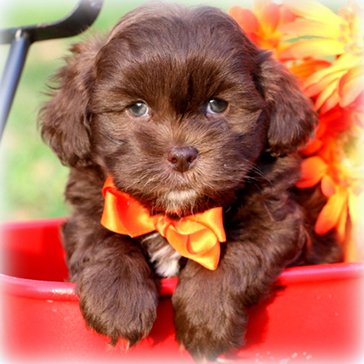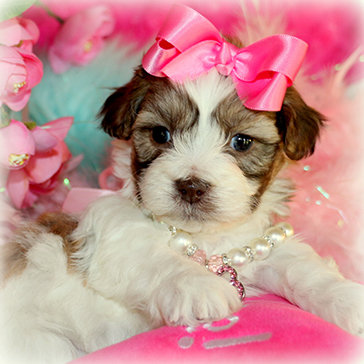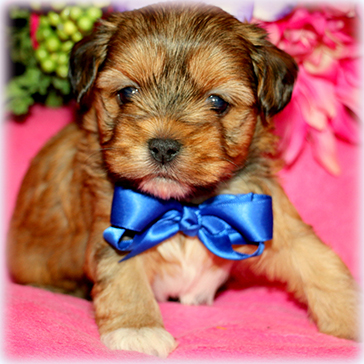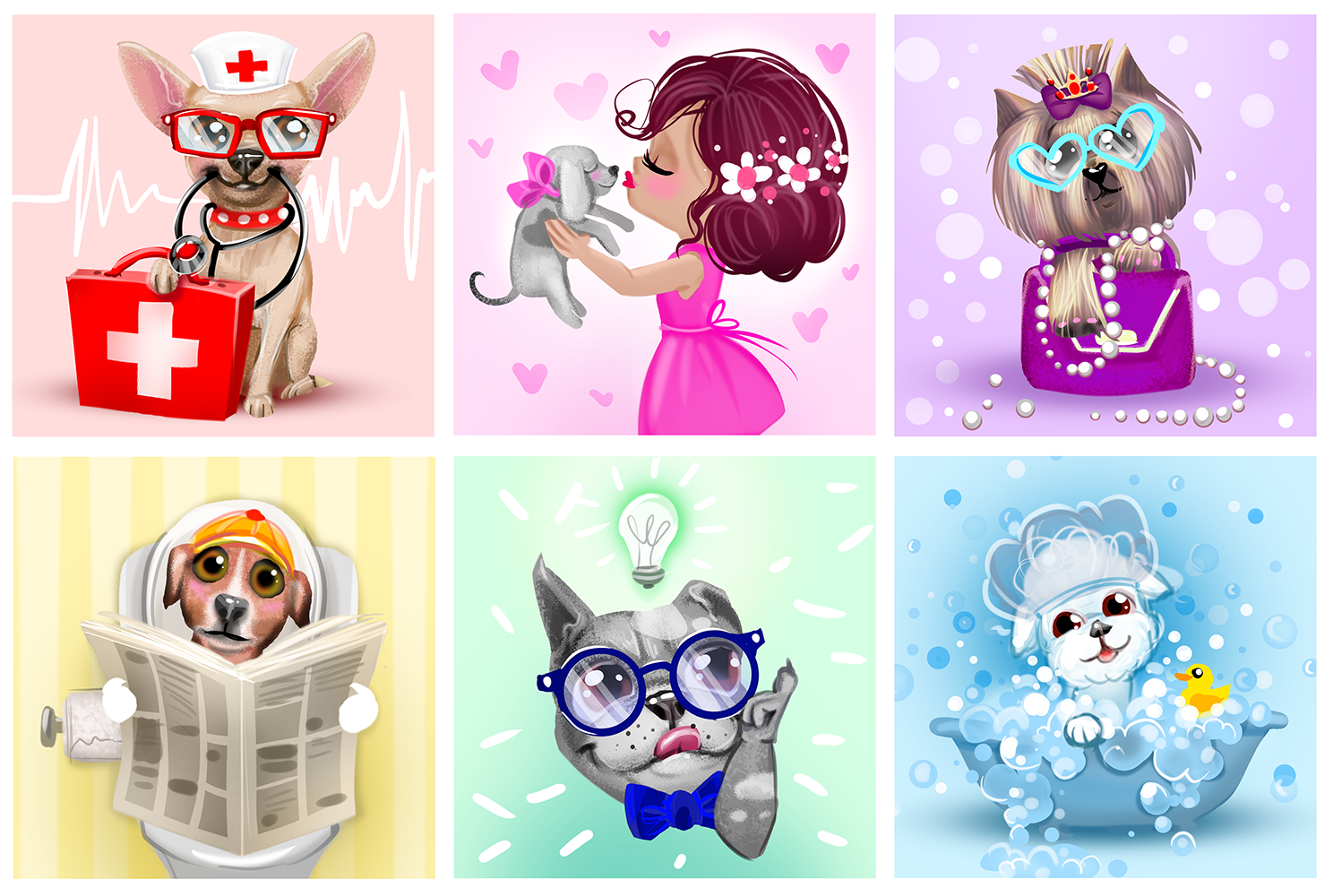
Frequently Asked Questions
FAQ Topics
General
1. Should I adopt a male or female puppy?
2. What are the benefits of spaying and neutering our dog?
Females:
- Lives a longer and healthier life
- Helps reduce uterine infections and breast cancer. Spaying your dog before her first heat offers the best protection.
- No heat cycles, therefore eliminating bleeding.
- Helps fight pet overpopulation
- Eliminates unwanted pregnancies
Males:
- Prevents testicular cancer if neutered before 6 months of age.
- Reduces or eliminates the marking of territory and spraying
- Better behaved
- Prevents unwanted pregnancies
- Helps reduce the roaming attributed to finding a mate. Therefore, reducing the risk of fighting with other males and injury in traffic.
- Helps fight the pet overpopulation
Spaying or neutering does not make your pet over weight.
3. What age do you let your puppies go home?
They have to be at least 8 weeks old to go to their new home. The time may be different for each puppy, they will stay here until they are completely ready to go to their new home. My first concern is the welfare of the puppy. I do not want any problems for either you are the puppy when you get home.
4. Can I come see my puppy before I pay for it?
Of course, you are welcome to see your puppy before you buy it 😉
5. Why is dog breeding important?
Dog breeding is important because, when dogs reproduce without human intervention, their offspring’s characteristics are determined by natural selection. While in planned dog breeding refers specifically to the artificial selection of dogs, in which dogs are intentionally bred by their owners.
6. How can I get my puppy to stop chewing on everything?
Chewing is a natural behavior. When you leave something enticing in a young puppy’s path, chances are they’re going to chew on it. That’s why it’s up to you to puppy proof your home. If you think your puppy could eat an object, get it out of their reach. That’s another reason why crates are so useful — they help keep your pup out of trouble. Give your puppy plenty of toys that are safe for them to chew on. Food puzzles and interactive toys can help keep their mind occupied.
7. Why doesn’t my puppy like being picked up by my kids?
8. Can I have a video clip of a specific puppy?
We do not have video clips on all of our puppies due to the large amount of time that it takes. Digital pictures are updated frequently.
10. What Is Puppy Socialization?
Socialization is the process of introducing your puppy to new sounds, smells, people, and objects to help them become comfortable in new situations. The best time to socialize a dog is during puppyhood when they’re between three to 20 weeks old. During this socialization window, your dog is naturally more curious and open to new experiences. You can also socialize with an adult dog or older dog, but it is a slower process—you have to break bad habits and combat anxiety and fear.
11. How Can I Socialize My Puppy?
There are various strategies for puppy socialization: introducing them to new people and family members, discouraging nipping, and exposing them to loud noises, new environments, or unfamiliar situations. To best socialize your puppy, think of the things they’ll commonly encounter as they age (for instance, noisy children or other dogs). Make sure that your puppy acclimates to those experiences when they’re young.
Purchasing A Puppy
1. What size will my puppy be as an adult?
This is a one of the toughest questions that I get on a daily basis, because no one really knows for sure the size a puppy will be as an adult. I have also included the weight of the parents on the individual puppy page. Using parents weights to judge the weight of your new puppy is not always perfect. Genetics often come into play and the size of grandparents and even great grandparents can also be a factor. Because we have over 15 years experience with raising these sweet babies, I can always give you my estimation of a puppy’s adult size.
2. How Does Securing a Deposit Work?
3. Do you ship your puppies?
4. Do I have to have a Pay Pal account to buy a puppy?
5. How do I know this is not a scam?
*Check out our facebook page, where many of our past families have posted comments and pics of their puppies that they have adopted from Princess Puppies.
*We have a verified Pay Pal account in good standing for the last 15 years.
*We will never ask you to wire money.
*We have reference upon request.
*Check out our testimonial page
*Please read our blog post Beware of Puppy Scams
6. Why should I buy my puppy from Princess Puppies?
*We offer a Health Guarantee above and beyond almost anyone. This is our way of letting you know that we stand behind our puppies.
*We have been raising puppies for 15 years and have the knowledge base that goes along with that.
*We always vaccinate and deworm our puppies.
*We provide as much education as possible to ensure that your puppy has a smooth transition from our home to yours.
*We care about the emotional & physical health of our animals. We strive to produce healthy, happy and well socialized puppies.
*Most of our customers are sent to us by word of mouth from past families that have adopted from Princess Puppies.
*Please read our Code of Ethics
7. Is this a puppy mill?
This is absolutely NOT a puppy mill. Our dogs are very well cared for, loved and each one is special in their own way to our family. No amount of money is more important than the emotional and physical health of my animals. I have heard people say, “watch our for people with more than one breed.” That offends me!! I love all my breeds and don’t want to pick only one specific breed to raise and enjoy. This is the hobby I have dreamed of since I was a little girl and I take pride in knowing that my four-legged babies are so loved and well taken care of.
Care And Feeding
1. What is my puppy's feeding schedule?
Your little puppy should be eating every 3-4 hours for the first couple weeks after going to their new home. Eating frequently will help reduce to chance of your puppy experiencing Hypoglycemia (low blood sugar). I suggest leaving the dry puppy food and water out at all times so they can eat when needed. You can get your new baby on a feeding schedule after they get a little older.
2. What is my puppy eating?
3. What if my puppy will not eat?
4. What should I bathe my new puppy with?
6. What treats do you recommend for my new puppy?
Your new puppy is used to getting Nu Vet Plus, this is all natural and a full spectrum immune system booster to keep you puppy healthy. Ingredients are human grade also, YIPPEE!!! Not only is Nu Vet Labs great for their health, here at Princess Puppies we use it as a treat and they LOVE it! It is liver based and tastes so good to them! Yummmmyyy! It is NOT sold in stores, so you will need to order it. Order it now, so you will have it when your new puppy comes home.
TO ORDER CALL: 800-474-7044
YOU WILL NEED ORDER CODE #: 65760
7. When can I take my puppy to the dog park?
8. When is the right time to show your dog affection?
Do not give your dog affection when he is excited, or when he is showing signs of dominance—very perky and proud, looking and asking you for attention. A dog that is asking to be petted is demanding that you do something for him. A demand from a dog is an alpha behavior. Alpha’s behavior can also be seen when he carries himself proud with a stance that makes him look bigger. His ears will be perked. When dogs carry themselves like this they look beautiful, but in the dog world, this is a dog trying to puff himself out for the role of the leader. Dogs should not be petted or sweet-talked at this time.
When a dog is showing signs of dominance the dog should receive no affection until you are able to make him realize he is not the boss and he accepts it and begins to act submissive. The more submissive and stable-minded the dog gets, the more love you can give him. Dogs should not get any affection until the dominance is under control. Your affection will reinforce whatever mind frame (in human words, “mood”) the dog is in.
9. How much does my puppy need to eat?
10. Are there human foods that are safe for dogs?
10. Should I brush my pet’s teeth?
- Signs of teeth and gum diseases begin occurring in 80% of dogs after reaching the age of 3.
- Because of the fact above, veterinarians recommend yearly professional cleanings, especially as your pet gets older, along with daily brushing by pet owners to combat this.
- The serious effects of dental problems can be prevented by proactive, preventative care. Help your pet with his beautiful smile; in doing so you will be promoting overall good health!
Potty Training
1. How do I potty train my new puppy?
Puppy Pad Training is recommended until fully vaccinated!! There are many different ways to house train puppies. One option for house training your puppy is to teach him to pee on a house training pad. Teaching your puppy to pee on a pad is very similar to teaching him to relieve himself on newspapers. Instead of newspapers you’ll be using house training pads designed for the purpose.
Choosing Where To Put The Pads
In order to train your puppy to use house training pads you should place the pads in the area you have chosen for your puppy to use. Ideally, this will be a somewhat confined area so your puppy will have a smaller choice about places to go. A kitchen, den or laundry room often makes a good choice. Any room with a tile or linoleum floor is a good choice since floors of this type are easy to clean if your puppy has an accident.
Watch For Signs
Once you have everything set up you should help your dog get started using the house training pad. You can do this by spending time with him and watching for signs that he needs to relieve himself. As soon as you see the signs, take your puppy to the house training pad and give him a word so he can associate it with the pad such as “potty” or “papers.” Your puppy should use the house training pad as designed. Make sure you praise your puppy to let him know that he’s done a good thing.
Put Your Puppy On A Schedule
Although your puppy may catch on that he’s supposed to use the house training pad, he may still need frequent encouragement at first. You can help your puppy if you will put him on a definite schedule. Take your puppy to the pad as soon as he wakes up in the morning, right after he eats, when he wakes up from naps, and right after he has a big play session. These are all times when puppies usually need to potty. You should also make sure your puppy uses the pad before he goes to sleep at night.
Watch for accidents
Your puppy will almost certainly have a few accidents so don’t be surprised by them. He’s only a puppy and he will make mistakes. If you catch your puppy in the act of having an accident then you should clap your hands or make some other loud noise to startle him and let him know that this is inappropriate behavior. Carry him to the house training pad and encourage him to finish there. Then praise him. If you find an accident after it’s already happened, let it go. Puppies have a short attention span and if you punish your puppy for something that’s already happened he won’t have any idea why he’s being punished. Instead, take the blame yourself and make a mental note to watch for the signs more closely the next time.
2. When should I start training my puppy?
Make sure to practice reward-based, positive reinforcement training technique.
Puppy Health
1. Has my puppy been de-wormed and are they up to date on vaccinations?
2. When should I take my puppy to the vet?
3. What if my puppy gets nauseated on the way home?
Nausea sometimes occurs but don’t be alarmed! Puppies often get motion sickness in the car, just bring a towel, soft blanket and some baby wipes just in case.
7. When should I give my pet medication for heartworm, fleas, or ticks?
It is always best to consult with your vet regarding any specific pet medication question; that being said, there are some general guidelines you can follow regarding these three types of common treatments.
- Heartworm medication should be provided for pets on a consistent basis by the time they reach the age of six months. This is especially relevant for areas of the globe, like North America, where mosquitoes, the carriers of heartworm, are relatively prevalent.
- Flea medication can be applied as a preventative or on an as-needed basis, i.e., when infestation occurs! There are various types of flea medication including pills and ointment. Some work better than others, so talk to your vet!
- Much of the time, medications on the market combat both ticks and fleas at the same time. So when should you invest in these types of pills? Some people try to be proactive in fighting off these pests since ticks especially can be very harmful for our pets if they pounce. During the months of summer and spring, the likelihood of infestation is at it’s highest, but that doesn’t mean the bugs won’t show up when the weather gets cold! A breakdown of this winter tick and flea reality can be found here in an article by PetMD. Though fleas and ticks are less prevalent at certain times to be sure; during winter, medication is still a good idea
9. How do I choose the best toys for small breed puppies?
When choosing the best toys for small breed puppies, consider their size, chewing habits, and level of activity. Toys should be appropriately sized to prevent choking hazards and durable enough to withstand teething. Interactive toys are also beneficial for mental and physical stimulation.
Contact us
If you would like to request additional information about available puppies, please enter your contact information and we will get back to you as soon as possible. We would love to hear from you! Please read the FAQ PAGE before calling.
Available Puppies
-

Sweet Garce
$2,300.00Click Here: More About Sweet GarceHi, I’m Sweet Grace 💕 I’m a gentle little Morkie girl with a calm heart and a love for cozy cuddles and quiet moments. I enjoy playing softly, following you around, and curling up when it’s time to relax. I’m easygoing, affectionate, and happiest when I’m close to my people. If you’re looking for a sweet, laid-back companion, I might just be your girl. 🐾
-

Waffles
$2,200.00Click Here: More About WafflesMeet Waffles, a teddy bear–looking Maltipoo with cute short legs, a compact little body, and a fun-loving personality that keeps things entertaining. He’s always ready to play, cuddle, or just follow you around like you’re the best thing that’s ever happened (because you are). Having a puppy like Waffles in your home means more laughs, less stress, and a built-in reason to smile every single day—plus, he’s excellent at reminding people to slow down and enjoy the little things. *Please note that there is a possibility that Waffles may not be ready in time for Christmas. It’s just according to how he is doing weaning from mommy.
-

Snowman
$2,200.00Click Here: More About SnowmanHi, I’m Snowman 🤍 Just look at my fluffy curls and my little button nose—I’m basically a walking teddy bear. I’m a sweet Maltipoo boy with a calm, loving heart and the softest fur, perfect for cozy cuddles by the tree. I love people, gentle playtime, and being held close like I am here. I’m the kind of pup who brings comfort, smiles, and a little extra magic wherever I go, and I can’t wait to be part of your family. 🐾✨ *Please note that he will be of age to go home before Christmas. With the timeline so close there may be a chance he will not be able to go home before Christmas if he’s not completely weaned and ready for his new home.
-

Bitty Boy
$2,200.00Click Here: More About Bitty BoyMeet Bitty Boy, the tiniest bundle of joy with a tail that truly never quits wagging. This happy little Shih-Tzu has a petite, compact body, short legs, and that perfect teddy-bear look that makes you smile instantly. Always cheerful and full of love, Bitty Boy acts like every day is the best day ever—especially if it involves cuddles. He’s the perfect puppy because he’s small enough to fit right into your arms, yet big enough in personality to fill your home with nonstop happiness. 🐾
-

Hambone
$2,200.00Click Here: More About HamboneThis sweet Shih-Chon pup is all cuddles, soft kisses, and cozy-by-the-fire vibes. With his gentle, loving nature, Hambone is the kind of puppy who wants to be wherever his people are—especially if it involves snuggling. Shih-Chons are wonderful family dogs because they’re affectionate, adaptable, and typically low-shedding, making them great for homes that want lots of love without the mess. Adding Hambone to your family means more joy, more laughs, and a loyal best friend to make every season feel a little warmer—especially the holidays.
-

Marshmallow
$2,200.00Click Here: More About MarshmallowMeet Marshmallow, our black-and-white Morkie pup, a tiny bundle of fluff with short little legs, a compact cuddly body, and the kind of teddy-bear face that melts your heart the moment he looks up at you. With a sweet, loving nature and a playful, fun-loving spirit, Marshmallow is the kind of little guy who believes life is better when shared—especially snuggles. One sentence why he’s perfect: He’d make a wonderful companion because he loves with his whole tiny heart and brings joy to every moment spent by your side.
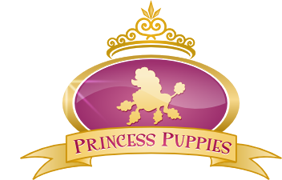


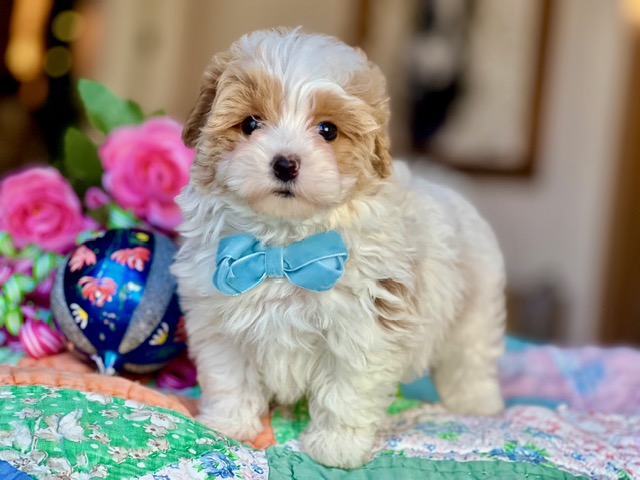
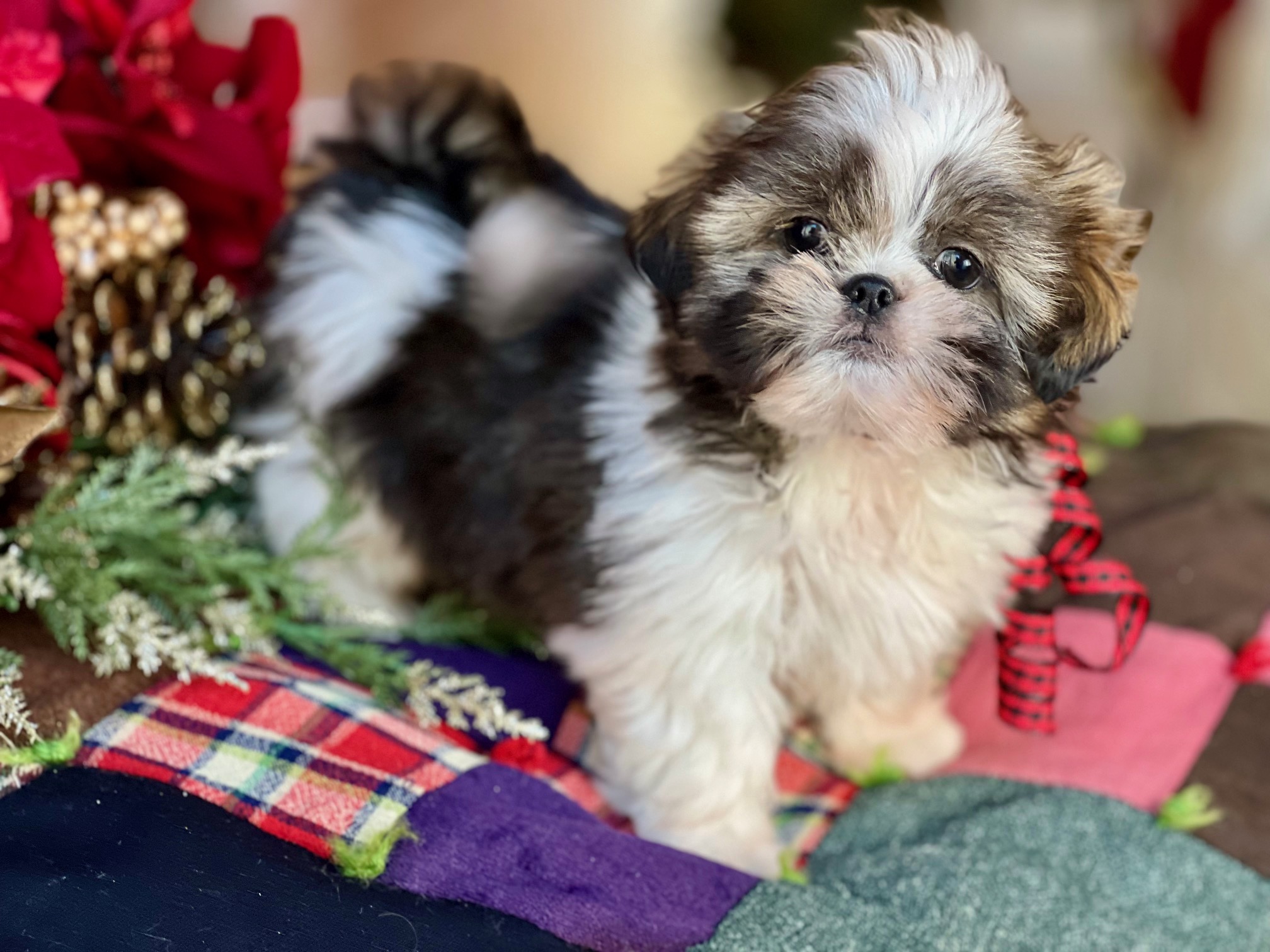

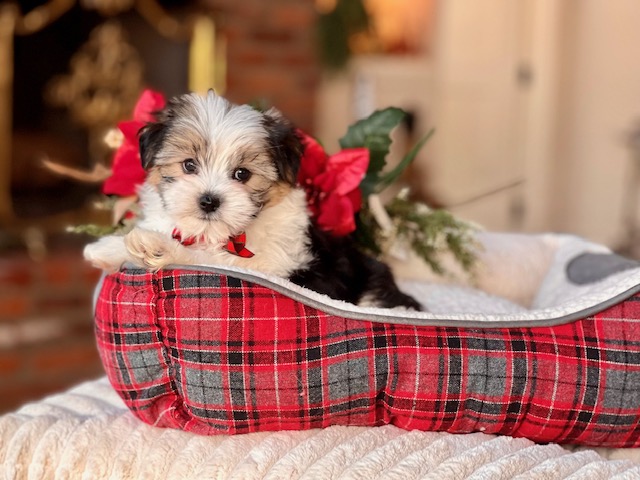
 318-613-2898
318-613-2898

